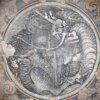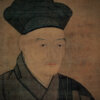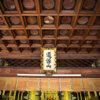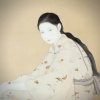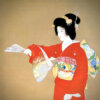Murakami Takashi “Mononoke Kyoto” Exhibition Report
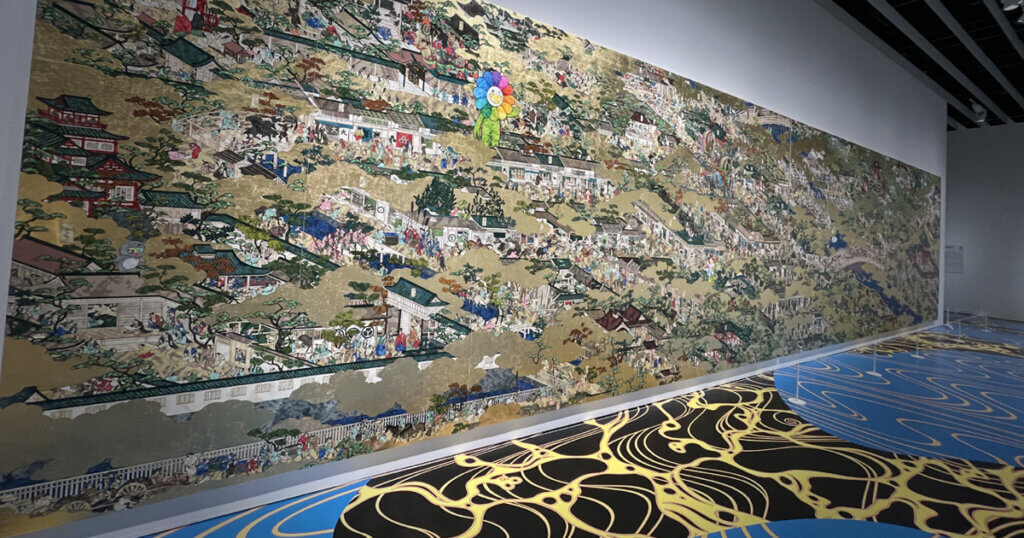
Contents
Preface
Murakami Takashi is a world-class artist representing contemporary Japan.

While many of his works are inspired by subcultures such as anime and manga, they are deeply rooted in traditional Japanese painting.
Murakami Takashi obtained his education and a doctorate from Tokyo University of the Arts.
This report details the “Murakami Takashi Mononoke Kyoto” exhibition, his first solo exhibition in Japan in eight years, held at the Kyoto City Kyocera Museum of Art. This is also his first solo exhibition held outside Tokyo.
Overview of the Exhibition
The “Murakami Takashi Mononoke Kyoto” exhibition provides a valuable opportunity to experience Murakami Takashi’s artistic exploration and fusion with traditional Japanese art.
One notable aspect is Murakami Takashi’s deep affection for Edo-period paintings, showcased in numerous works paying homage to this historical background.
The exhibition effectively leverages Kyoto’s rich historical setting.
Atmosphere and Entrance of the Venue
The Kyoto City Kyocera Museum of Art, located near Heian Shrine, enhances the exhibition’s ambiance with its surrounding scenery.

From the entrance, the unique world of Murakami Takashi unfolds, setting it apart from typical art exhibitions.

Display at the Entrance
A massive sculpture displayed at the entrance captivates visitors with its grandeur. The installation, resembling a giant figure against a backdrop of cherry blossoms, heightens the anticipation for the exhibition.

In addition to paintings, a wide variety of artworks are on display in this exhibition, which reminds us of the diversity of contemporary art.

Main Exhibits and Highlights
1. A-Un Statues
At the entrance, there were the 4-meter-tall statues of a red demon and a blue demon.

I think they are inspired by the Tentōki and Ryūtōki standing statues by Unkei’s son, Kōshō, in the Kōfuku-ji temple.

Murakami Takashi created these statues during the Great East Japan Earthquake, hoping to protect people from disasters and diseases.

The statues’ compelling composition, with the demons crushing evil, is overwhelming.
2. Homage to Iwasa Matabei’s “Scenes In and Around Kyoto” Folding Screen
This homage to the Sengoku to early Edo period painter Iwasa Matabei’s “Scenes In and Around Kyoto” folding screen is a grand work spanning 13 meters.

The original detailed depiction of Kyoto’s streets and daily life, including scenes of men being carried away drunk near bridges, is faithfully recreated by Murakami Takashi.



He interweaves his original characters, modernizing the piece.

3. Flowers by Ogata Kōrin
Inspired by Edo period Rinpa artist Ogata Kōrin, this piece reinterprets Kōrin’s famous “Red and White Plum Blossoms” screen with a modern twist using Murakami Takashi’s characters.

The blend of Kōrin’s design and contemporary art offers a captivating visual experience.

4. Wind God and Thunder God
Murakami Takashi’s “Wind God and Thunder God” depicts colorful, pop-styled characters inspired by historical Rinpa artists like Tawaraya Sōtatsu, Ogata Kōrin, Sakai Hōitsu, Suzuki Kiitsu, and Imamura Shikō. Murakami Takashi responds to this traditional theme with his modern approach.


5. Four Seasons FUJIYAMA
“Four Seasons FUJIYAMA” stands out with its innovative approach and deep background. At first glance, it appears chaotic with numbers scattered across the canvas, but a deeper story lies beneath, revealing Murakami Takashi’s unique aesthetics.

This custom-made piece, ordered through long discussions with the client, took seven years to complete. Murakami Takashi set a completion deadline for autumn 2024 but faced challenges with the exhibition’s management, causing significant delays. To express his frustration over the delayed completion, Murakami Takashi incorporated prime numbers, symbolizing unresolved emotions, into the artwork.
This unique piece leaves viewers curious about its final completion.
6. Cloud Dragon and Red Dragon
“Cloud Dragon and Red Dragon,” spanning 18 meters, was created after Murakami Takashi was challenged by the esteemed Japanese art historian,Tsujii Nobuo, to paint more himself.

Inspired by Soga Shōhaku’s dynamic style, Murakami Takashi showcases his technical prowess and expressive power in this piece.

7. Amida Nyorai Looking back and Welcoming You
“Amida Nyorai Looking back and Welcoming You” is a historically rich and deeply religious piece, inspired by the Amida Nyorai Raigō paintings of the Kamakura period.


The Amida Nyorai Raigō-zu (Descent of Amida Buddha) was often depicted during the period when Mappō thought became widespread. Mappō thought refers to a belief in Buddhism that the teachings of Shakyamuni Buddha would gradually decline, leading to a period where people would no longer be saved. In Japan, it was believed that the country entered the age of Mappō during the late Heian period. Within this historical context, people yearned to be saved from the sufferings of the present world and embraced the belief that after death, Amida Nyorai would come to welcome them and guide them to the Pure Land.
The Amida Nyorai Raigō-zu symbolizes this faith, depicting Amida Nyorai coming to welcome the deceased, accompanied by Buddhas and Bodhisattvas. These images hold a particularly important position in Buddhist art and can be seen in many temples and Buddhist halls.
Murakami Takashi’s piece, inspired by the famous Mikaeri Amida statue at Eikandō in Kyoto, integrates a modern humorous twist. He adopts the distinctive posture of the statue, combining classical themes with contemporary humor.
The technical aspects of “Amida Nyorai Looking back and Welcoming You” are also noteworthy. Murakami Takashi employs techniques reminiscent of the pointillism used by Impressionist painters to create intricate details, effectively expressing light effects and subtle color variations, adding depth and movement to the piece.

Murakami Takashi’s Studio Work and Process Economy
Studio Work
Murakami Takashi’s works are renowned for their large-scale studio production.
This exhibition was particularly notable for displaying the instruction manuals used in this studio work.

In the production process, many staff members work on creating the pieces under Murakami Takashi’s guidance. As a director, Murakami Takashi provides detailed instructions and makes every effort to enhance the quality of the works.

Because of this, his works boast an exceptionally high level of completion, inspiring many people.

Exhibition as Process Economy
A unique feature of this exhibition is the display of unfinished works, showcasing the ongoing creation process.

Murakami Takashi responded to the museum’s request by producing many new works in addition to showcasing his past works. This decision was made out of necessity, as many of his past works are owned by overseas clients, and borrowing and transporting them to Japan would incur enormous transportation and insurance costs, which were not feasible within the limited budget.
Despite this, the budget was still insufficient, and Murakami Takashi had to allocate his resources to find solutions, leaving him with limited time to create enough works before the exhibition. As a result, he changed his approach to gradually display completed pieces over the long production period. This innovative style allowed visitors to enjoy the changes and processes leading to the completion of the exhibition.
Such a display method, full of the live feel unique to contemporary artists, provides viewers with a new perspective, making the process itself a part of the artwork.
Murakami Takashi’s Message

At the end of the exhibition, Murakami Takashi’s message to the visitors was displayed, reflecting on the background of the exhibition and the current state of the Japanese art environment. He emphasized that art appreciation requires reflection and cannot be easily understood at first glance. Through this exhibition, Murakami Takashi hopes to inspire visitors to rethink the meaning of art in Japan.
Conclusion
The “Murakami Takashi Mononoke Kyoto” exhibition was a very valuable opportunity to enjoy the fusion of his diverse art styles with traditional Japanese art.
Murakami Takashi’s works transcend the boundaries of contemporary art, offering deep inspiration and thought-provoking experiences to many people.
Visiting this exhibition allows one to feel the efforts and creativity of a samurai artist active on the world stage.
Murakami Takashi’s works are not only visually appealing but also carry deep stories and messages behind them. Understanding his creative process and the background of the exhibition significantly changes how one views and feels about his works. Through his pieces, you can feel the potential for fusion between traditional Japanese art and contemporary art, and reacknowledge the power of art.
The above is the report on the “Murakami Takashi Mononoke Kyoto” exhibition. We hope that Murakami Takashi’s deep understanding and passion for art will be conveyed to many people through this exhibition.


